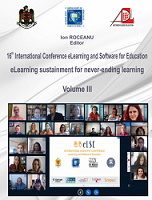DATA SCIENCE AND MACHINE LEARNING TECHNIQUES FOR CASE-BASED LEARNING IN MEDICAL BIOENGINEERING EDUCATION
DATA SCIENCE AND MACHINE LEARNING TECHNIQUES FOR CASE-BASED LEARNING IN MEDICAL BIOENGINEERING EDUCATION
Author(s): Cătălin Buiu, Vlad-Rareș DănăilăSubject(s): Higher Education , Health and medicine and law, ICT Information and Communications Technologies
Published by: Carol I National Defence University Publishing House
Keywords: data science; artificial intelligence; deep learning; case-based learning; colposcopy; cervigrams;
Summary/Abstract: Medical bioengineering professionals are expected to play a leading role in the development of advanced algorithms and methods with the greater goal to enhance health care in fields like diagnosis, monitoring, and therapy. In a recent study on the current research areas in big data analytics and artificial intelligence in health care, after a systematic review of literature, it was found that the primary interest area is medical image processing and analysis followed by decision-support systems and text mining. Case-based learning is an instructional design model that is learner-centered and intensively used across a variety of disciplines. In this paper, it is presented a set of deep learning tools and a case study that help medical bioengineering students to grasp both theoretical concepts (medical, such as gynecological disorders and technological, such as deep learning, neural network architectures, learning algorithms) and delve into practical applications of these techniques in medical image processing. The case study concerns the automated diagnosis of cervigrams (also called cervicographic images), that are colposcopy images used by the gynecologist for cervical cancer diagnosis. The tools described in this paper are based on using PyTorch and are implemented in a Jupyter notebook. The notebook introduces the students to the problem of cervigrams classification, provides access to the dataset, allows data augmentation, data visualization and performing transfer learning. The notebook ends with study questions.
Journal: Conference proceedings of »eLearning and Software for Education« (eLSE)
- Issue Year: 16/2020
- Issue No: 03
- Page Range: 186-191
- Page Count: 6
- Language: English

